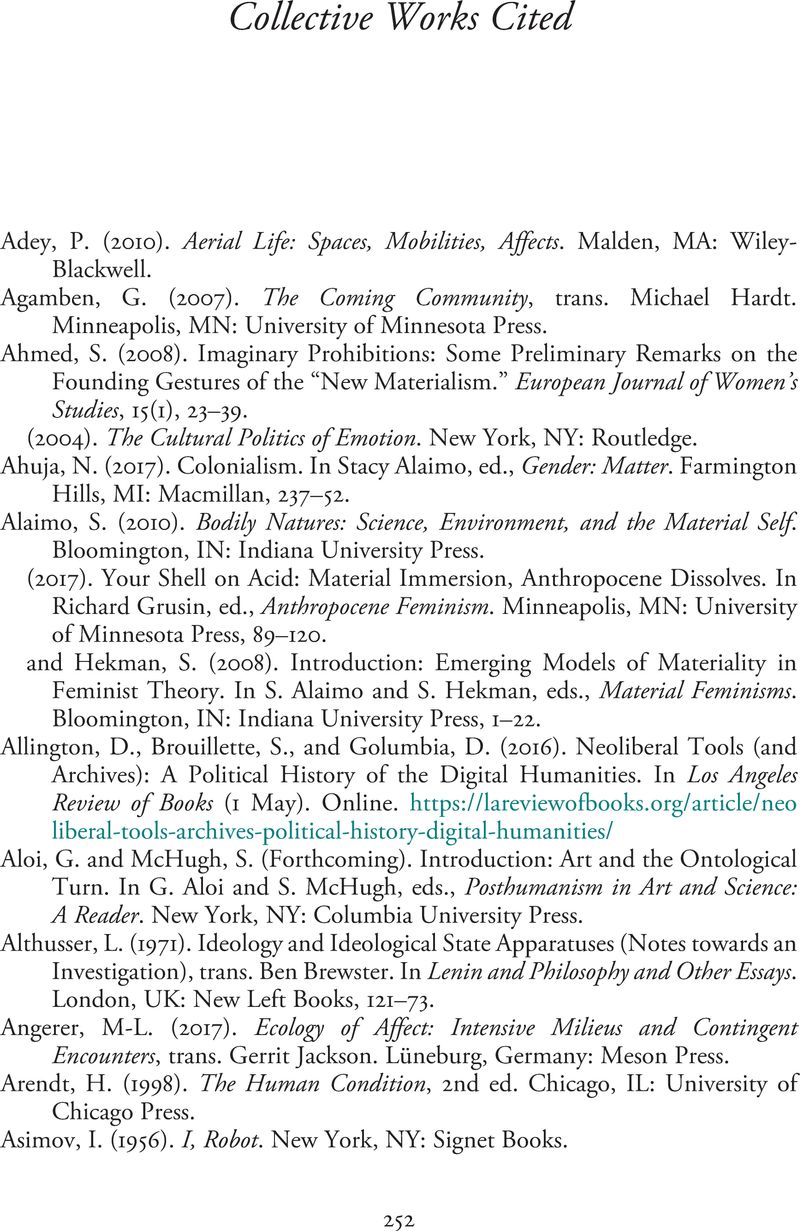Collective Works Cited
Published online by Cambridge University Press: 26 November 2020
Summary

- Type
- Chapter
- Information
- After the HumanCulture, Theory and Criticism in the 21st Century, pp. 252 - 276Publisher: Cambridge University PressPrint publication year: 2020

